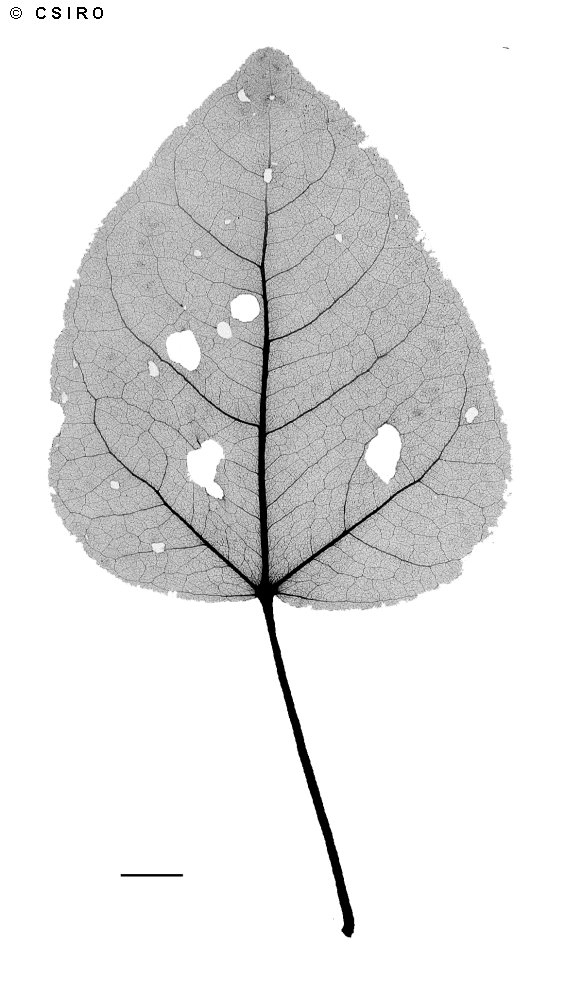Australian Tropical Rainforest Plants - Online edition
Azanza thespesioides (Benth.) F.Areces

Areces-Berazain, F. & Ackerman, J.D. (2016) Botanical Journal of the Linnean Society 181: 188.
Flowers and fruits as a shrub about 1-2 m tall.
Leaf blades about 7-9 x 5.5-7.5 cm, petioles about 4-6 cm long. Both the upper and lower surfaces of young leaf blades clothed in stellate hairs. A distinct +/- lanceolate or elliptic gland present near the base of the midrib on the underside of the leaf blade. Lateral veins, about 5 or 6 on each side of the midrib, usually forming loops inside the blade margin. Stipules small, +/- linear. Twig bark strong and fibrous when stripped.
Capsules 3-5 celled, about 20-26 x 15-17 mm, outer surface clothed mainly in prostrate, simple hairs. Calyx persistent at the base, outer surface clothed in short stellate hairs. Seeds about 4-5 x 3 mm, clothed in short, appressed, simple hairs. Embryo about 6 x 3 mm, radicle about 2 x 1 mm, shorter than the cotyledons.
Features not available.
Endemic to Australia, occurs in WA, NT, CYP and NEQ. Altitudinal range from near sea level to 380 m. Grows in open forest and on the edges of monsoon forest and vine thickets.
Thespesia thespesioides (R.Br. ex Benth.) Fryxell, The Natural History of the Cotton Tribe : 99 (1978).Thespesia lampas var. thespesioides (Benth.) Fryxell, Australian Journal of Botany 13: 97 (1965). Fugosia thespesioides Benth., Fl. Aust. 1: 220 (1863), Type: Northern Territory, Inglis Is., Buckingham Bay, 24 Feb. 1803, R. Brown 5139; lecto: BM; iso: BRI, MEL, K.





